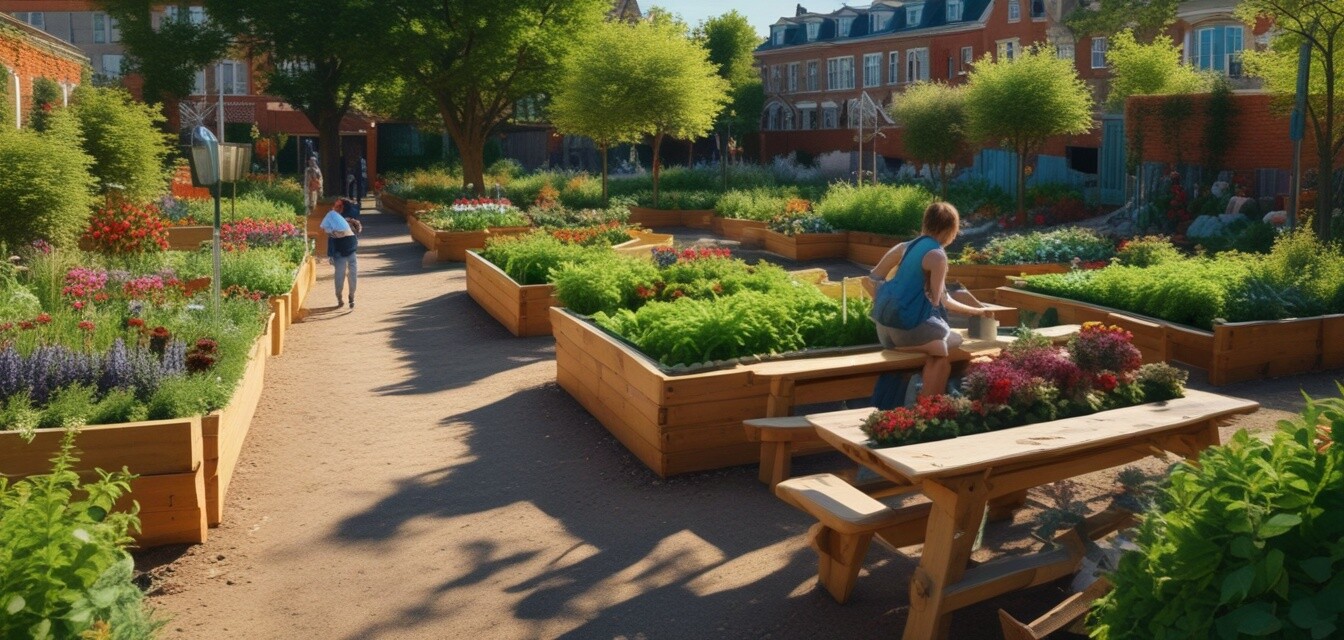
The Connection Between Gardening and Community Building
- Gardening fosters a sense of belonging and community spirit.
- Participating in garden activities promotes collaboration and teamwork.
- Community gardens can serve as educational platforms for sustainable practices.
- Gardening promotes physical and mental well-being among community members.
- Events and projects centered around gardening unite neighborhoods and strengthen ties.
Gardening offers much more than cultivating plants; it is a powerful tool for building community connections. Whether through community gardens or shared gardening events, people come together, share knowledge, and foster friendships. In this article, we'll explore how gardening creates a sense of belonging and unity among neighbors.
The Role of Community Gardens
Community gardens are collaborative projects that bring together people from different backgrounds. They allow residents to partake in gardening activities, share resources, and learn from one another. Let’s explore some benefits of community gardens:
| Benefits | Description |
|---|---|
| Social Interaction | Enhances relationships and fosters friendships among neighbors. |
| Food Security | Provides fresh produce to underserved communities. |
| Environmental Awareness | Encourages sustainable practices and biodiversity. |
| Educational Opportunities | Offers workshops and hands-on learning experiences. |
How Gardening Events Promote Community Spirit
Organizing gardening events, such as plant swaps or communal planting days, can energize neighborhood participation. These events are excellent opportunities for people to engage with one another and to learn new skills. Some common gardening events include:
- Plant swaps: A fun way for gardeners to share excess plants.
- Community clean-up days: Beautifying public spaces and parks.
- Workshops: Teaching sustainable gardening techniques.
- Harvest festivals: Celebrating the fruits of labor together.
The Psychological Benefits of Gardening
Gardening has long been associated with numerous psychological benefits. When individuals engage in gardening within a community, they often experience:
- Reduced stress levels
- Increased physical activity
- A sense of accomplishment and purpose
- Heightened feelings of happiness and contentment
Building a Garden Community
Creating a strong community garden involves more than just planting seeds. It's about cultivating relationships among members. Here's how you can get started:
- Gather interested neighbors to discuss ideas and goals.
- Select a suitable location for the garden.
- Design a plan that incorporates everyone’s input.
- Divide roles and responsibilities among members.
- Organize regular meetings to discuss progress and share experiences.
Examples of Successful Community Gardens
Across the globe, various community gardens have become models of collaboration and social interaction. Notably:
| Community Garden | Location | Key Features |
|---|---|---|
| GreenThumb | New York, USA | Diverse plant selection and educational programs |
| Grafitti Garden | Melbourne, Australia | Art installations with community-grown plants |
| Lotus Garden | Tokyo, Japan | Focus on native plants and sustainability |
Conclusion
Gardening holds an incredible potential to unite individuals and foster a strong sense of community. Through collaborative efforts and engagement in gardening initiatives, people can build meaningful relationships, promote sustainability, and create vibrant neighborhoods. Engage with your local community and discover how gardening can make a difference.
Pros
- Fosters friendship and collaboration among neighbors.
- Enhances food security and access to fresh produce.
- Encourages environmental sustainability and education.
Cons
- Requires commitment and ongoing participation.
- Can be challenging to organize and maintain.
For more insights into gardening and community building, check out our News and Trends category for updates on innovative practices and community initiatives.